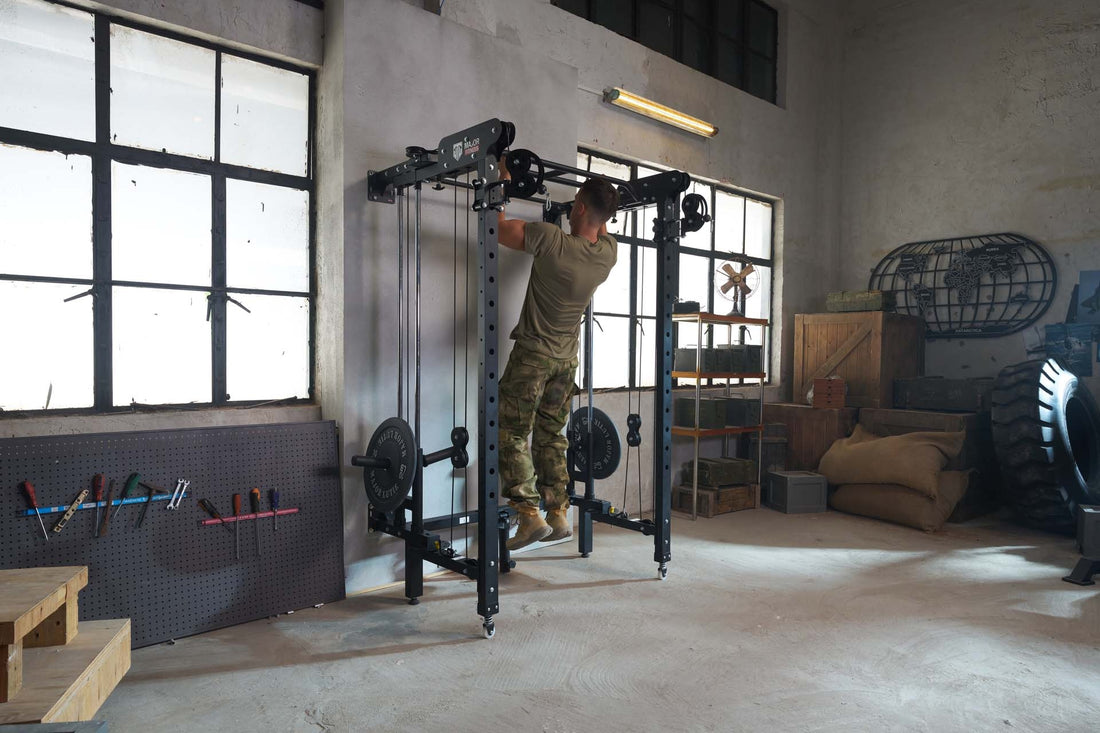
When it comes to building a robust and powerful back, the debate of Lat Pulldown vs Row is a common one among fitness enthusiasts and professionals. Both exercises are staples in back workout routines, yet they target the muscles in different ways. Understanding the key differences between these exercises can help you optimize your training regimen and achieve your fitness goals more effectively.
Lat Pulldown: An Overview
The lat pulldown is a classic exercise performed on a cable machine. It primarily targets the latissimus dorsi, which are the large muscles on either side of your back. These muscles give you the coveted 'V' shape by making your back appear wider.
Benefits of Lat Pulldown:
- Isolation: Allows for greater focus on the lat muscles without engaging too many secondary muscles.
- Variation: The exercise can be performed with different grips – wide, narrow, or neutral – to target different parts of the lats.
- Accessibility: It's straightforward for beginners and doesn't require as much technique or stabilization as free-weight exercises.
To perform a lat pulldown:
- Sit down at a lat pulldown machine and adjust the knee pad to fit snugly against your thighs.
- Grasp the bar with your desired grip (wide or close) and pull it down towards your chest.
- Exhale as you pull the bar down, keeping your chest up and shoulders back.
- Slowly return the bar to the starting position while inhaling.
Row: An Overview
Rows come in various forms – seated cable rows, bent-over barbell rows, dumbbell rows, and more. Regardless of the variation, the primary focus is on the middle back, including the rhomboids, trapezius, and rear deltoids.
Benefits of Rows:
- Compound Movement: Engages multiple muscle groups including the middle back, biceps, lower back, and even the core.
- Versatility: Can be performed with various equipment and grips to target different muscle groups.
- Functional Strength: Improves overall pulling strength, which is crucial for functional movements like pulling and lifting.
To perform a basic bent-over barbell row:
- Hold a barbell with an overhand grip, bending at your waist while keeping your back straight and knees slightly bent.
- Pull the barbell towards your lower ribcage, squeezing your shoulder blades together at the top.
- Lower the barbell back to the starting position in a controlled manner.
Lat Pulldown vs Row: Key Differences
While both exercises are excellent for back development, they each offer distinct benefits that make them unique.
Muscle Targeting
The Lat Pulldown primarily focuses on the latissimus dorsi, while rows target a wider variety of muscles in the middle back and additionally engage the biceps, lower back, and core. If your goal is to specifically grow your lats, lat pulldowns might be more beneficial. However, for overall back thickness and strength, rows are indispensable.
Range of Motion
Rowing movements typically allow for a greater range of motion compared to lat pulldowns. This can lead to an increased muscle activation and hypertrophy, especially for the mid-back muscles.
Level of Engagement
Rows are generally more compound and functional, requiring more overall body engagement and stabilization. Lat pulldowns are more isolated and focused, ideal for those looking to specifically target their lats without much involvement of other muscle groups.

Integrating Both Exercises
For a well-rounded back workout, integrating both lat pulldowns and rows can offer comprehensive back development. Here’s a basic workout plan that incorporates both:
- Warm-up: 5-10 minutes of light cardio and dynamic stretches.
- Lat Pulldown: 3 sets of 10-12 reps
- Bent-Over Barbell Row: 3 sets of 8-10 reps
- Seated Cable Row: 3 sets of 10-12 reps
- Face Pulls: 3 sets of 12-15 reps
- Cool down: 5-10 minutes of stretching focused on the back and shoulders.
Common Mistakes and Injury Prevention
While performing these exercises, it's crucial to maintain good form to avoid injuries.
Lat Pulldown Mistakes:
- Using Momentum: Swinging the body or using momentum to pull the weight can lead to injuries and reduce effectiveness.
- Incorrect Grip: Using too wide or too narrow a grip can strain the shoulders and reduce the activation of the lat muscles.
Row Mistakes:
- Rounded Back: Maintaining a neutral spine is crucial to avoiding lower back injuries.
- Overpulling: Using excessive weight and overpulling can compromise form and lead to strains, particularly in the shoulders and lower back.
Paying attention to your body and using proper form can significantly reduce the risk of injury and improve the effectiveness of the exercises.
Final Thoughts
Both lat pulldowns and rows have unique advantages that make them indispensable components of a comprehensive back workout. By understanding their differences and benefits, you can tailor your exercise routine to better meet your individual fitness goals. Whether you choose to focus on one exercise or incorporate both, consistency and good form will be your best allies in building a stronger, more resilient back.




















